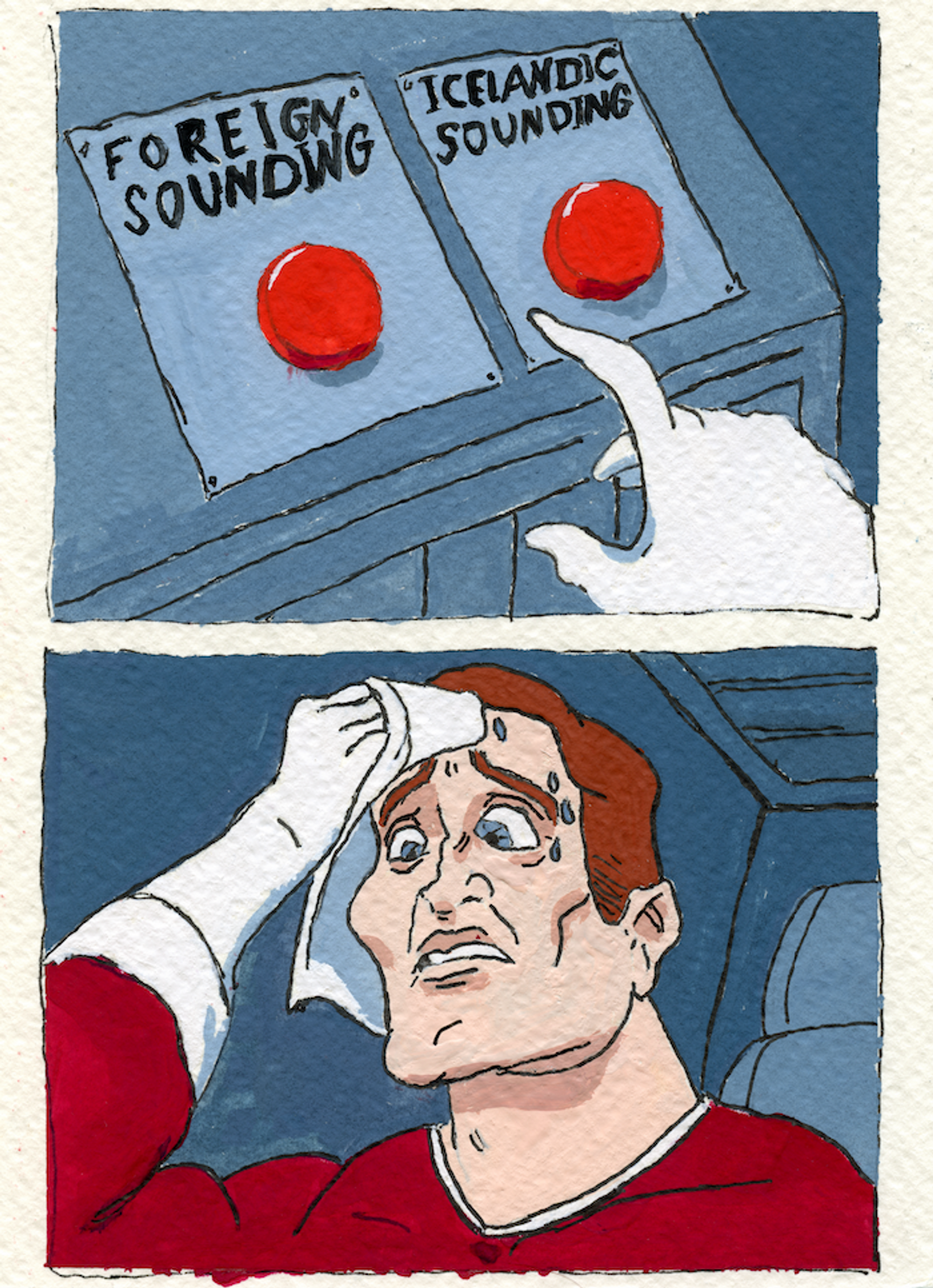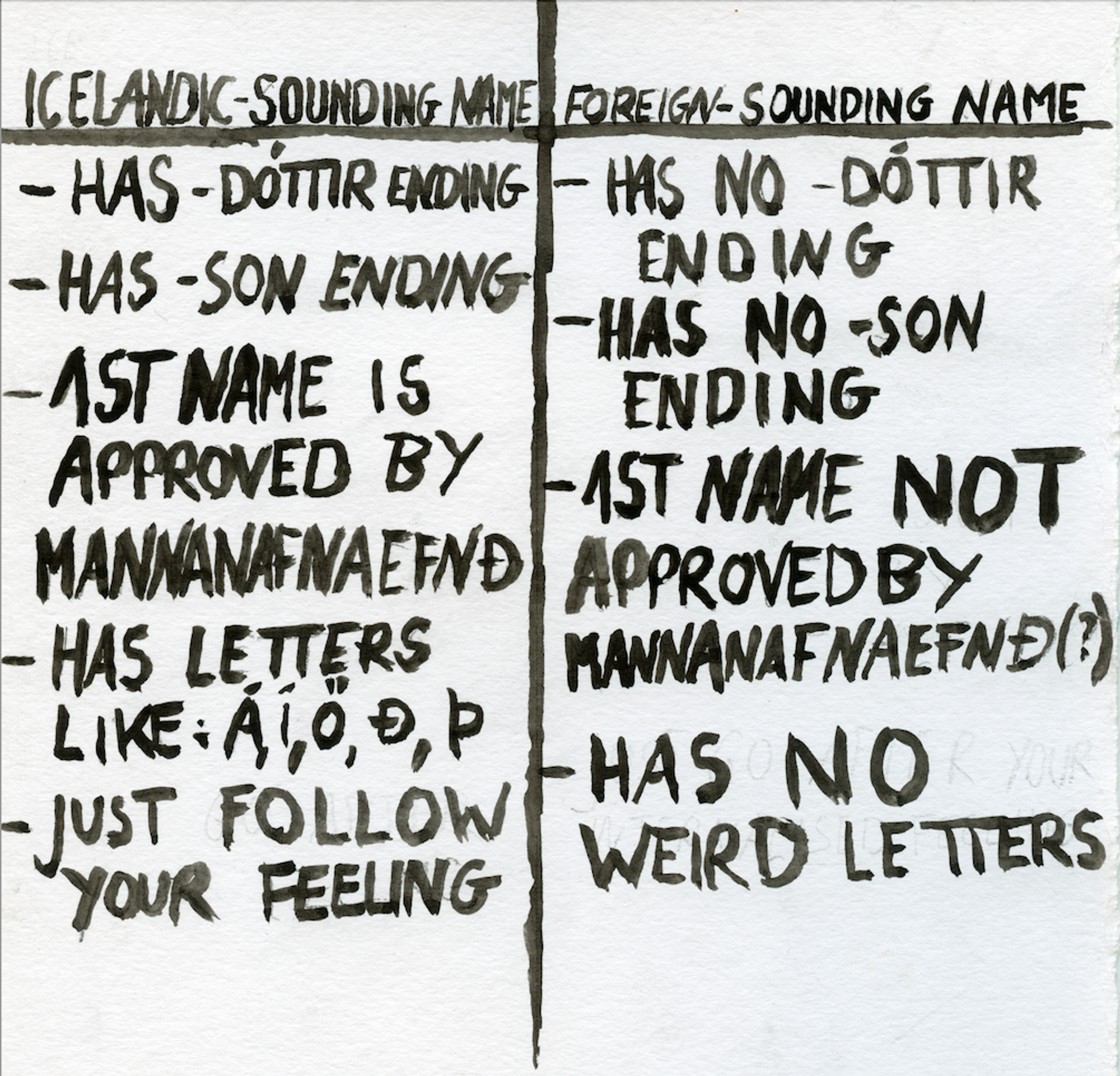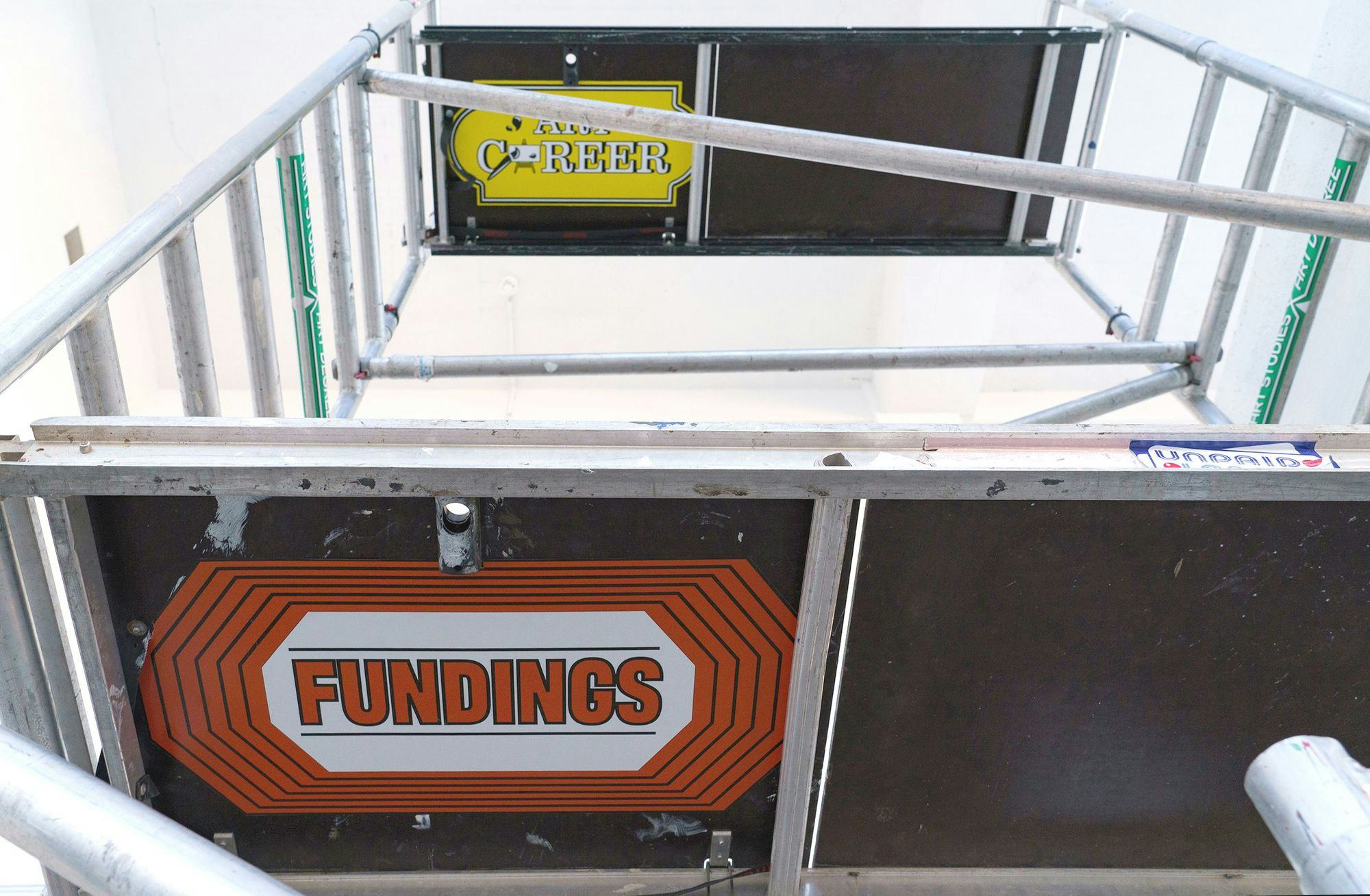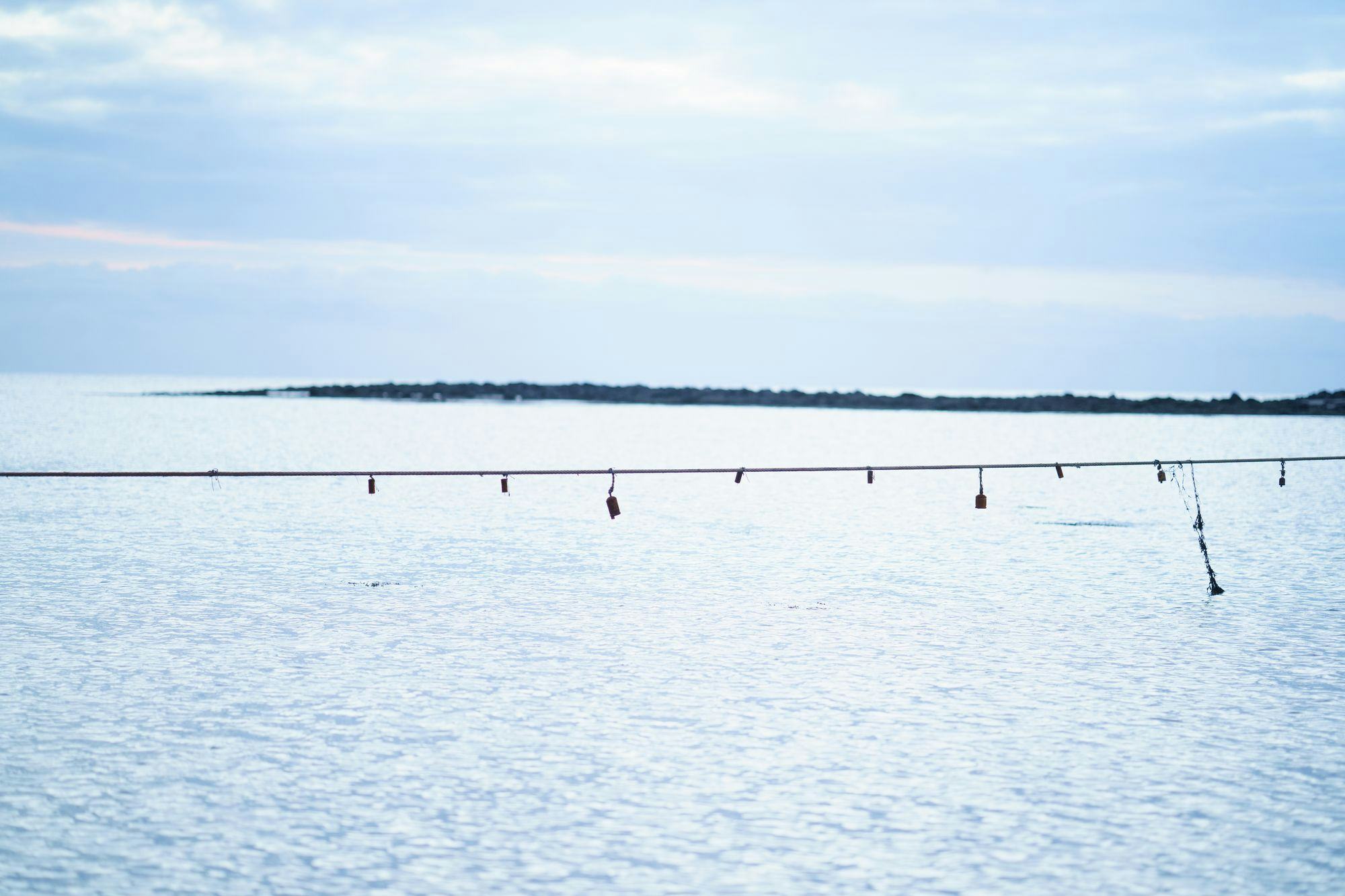In October 2021, the artist collective Lucky 3 presented one of their most remarkable performances during the Sequences Real Time Art Festival. Darren Mark, Dýrfinna Benita Basalan and Melanie Ubaldo silently mopped the floor of the artist-run space OPEN for 8 hours straight, occasionally uttering the Filipino word puti meaning white in English. The moment a white person entered the space, one artist from the trio would mop the floor around them, giving that person the impression of not being welcome. Björk Hrafnsdóttir wrote in an article for the online art magazine Artzine that she felt hyperaware of her discomfort as they mopped the floor around her and as she made more of a mess as she moved out of the way.[1] Björk wasn’t the only person to feel uncomfortable in the context of the performance, which was difficult for many spectators as they lacked the experience of being faced with exclusion and they had difficulty understanding what was happening.
I was thrilled to witness the performance. The success of the collective, as well as their emerging solo careers, makes me happy. I wholeheartedly welcome the increasing possibilities opening up for artists of foreign backgrounds in Iceland—including myself. In this context, it might be worth mentioning a few such endeavours, like the public open call issued by the board of The Living Art Museum in the autumn of 2020, the success of Vestur í bláinn, as well as projects like Gerðuberg Calling at the Reykjavík City Library, Tökum höndum saman, a collaboration between the Reykjavík Art Museum and the Reykjavík City Museum, or the Polish Art Festival Vor/Wiosna in Sláturhúsið in Egilsstaðir.
However, it is important to remember that these possibilities are just a small step in the right direction. The progress and changes that will (and have) to take place in the coming years need to be substantial and it’s crucial that even in a (pretty) progressive professional environment like the art world, we never become complacent with the status quo. While I appreciate the recent changes and decisions made by various art institutions in Iceland, it is important to acknowledge that there is still work to be done. The significance of this work becomes even more important when considering the infrastructure plans of Iceland’s cultural institutions.
As a country, Iceland displays a clear ambition to expand its presence in the international sphere. Given the increasing reliance of its economy on the tourism industry, there is a growing need to export more culture. However, it is important to note that cultural exchange should not be solely driven by financial interests but must be executed with a sense of responsibility. To effectively export visual art, Iceland’s cultural institutions must embrace greater transparency and inclusiveness, promoting a diversity of perspectives and avoiding tokenism. This will enable these institutions to participate fully in creating a more inclusive and equitable cultural landscape.
These changes, while most-often beneficial for artists, serve the desire to maintain the reputation of the institutions. They are implemented in a controlled environment to slow down the necessary transformation and to maintain current power dynamics within the art world.
In this context, it is essential not to rely solely on institutions to drive change. Rather, these changes in attitude should start with each of us. From there, we must work together to pressure these institutions and drive change from within. Criticising institutions in private circles will not change them. As we bring up private conversations, we have arrived at the core of my motivation for writing this article.
Throughout the last year, I have heard in many private conversations that some open call results in the last months were dictated by political interest instead of artistic. I have heard that no one will attend an opening of a group show without at least one Icelandic artist included. Someone said to me that the selection for a particular series of exhibitions within a particular museum was like someone was checking boxes. Finally, I have heard that one artist mentioned in Björk’s Artzine article is exhibited frequently due to the zeitgeist. I would love to reply to those statements with a juicy “OK boomer”, but those statements were spoken by people of my own generation.
First, every choice made by an institution is a political one, whether it is about exhibiting artists from a majority or minority. Every decision influences the representation of certain artist groups and contributes to the whole. Every decision made by an institution leaves an indelible mark on history, shaping the discourse of art and influencing the representation of individuals and groups. The underlying mechanism is constructed through inclusion and exclusion, which will always lead to conflicts and misunderstandings. To say it in plain language: a choice of only “white” Icelandic artists for an exhibition is also political. Furthermore, using the term politics as a pejorative usually comes from a very specific ideological corner of society, implying that it shouldn’t be used or brought up in discussions.
The success of artists from minority groups is, unfortunately, often attributed to political correctness or quotas rather than their talent and hard work. It suggests that the artist’s success is not truly deserved and that they have only achieved it because of external factors rather than on their own merit. It also reinforces a harmful stereotype that artists from minority groups are less talented or not as capable as those from majority groups. Moreover, that kind of statement sends a message that artists from minority groups are not truly valued or welcomed within the art world but are rather included out of a sense of obligation or pity. Artists feel a sense of tokenism and erasure, as it implies that their work is not judged on its quality, but more so as a means of meeting a diversity requirement. This way of thinking distracts from the real issues and challenges faced by artists from minority groups. Rather than addressing the structural barriers and systemic discrimination, the emphasis on non-existing quotas only strengthens the pre-existing inequalities.
And let me be clear, I am not saying that quotas are always negative or that there is no place for them in the art world. Quotas can be an important tool for addressing imbalances and promoting diversity. I see it more as the first step and a catalyst of a snowball effect, as we should always work towards a change of mindset. Finally, the work of institutions does not excuse our lack of will to tackle those imbalances on other fronts.
How Many Artists of Foreign Origin Do We Have in Iceland?
I wanted to review how true the rumours about the unofficial quota system are for myself. As of 2022, according to publicly available data, approximately 16.3% of the inhabitants of Iceland are people of foreign origin. But it would not be totally fair to refer to this number when calculating the number of artists of foreign origin, as there is little or no data available on this subject, making this the only number one can work with.
In their comprehensive text in the second issue of Art in Iceland, “It should be desirable for artists to live in Reykjavík”, Megan Auður, Bryndís Björnsdóttir, Hugo Llanes, Vikram Pradhan and Wiola Ujazdowska delved into statistics for the years 2011 to 2021, so I decided to focus only on 2022. It is, however, important not to compare the methodologies of these articles—the statistics in their article were made in a scientific manner, whereas mine are rather a grim joke.
I decided to approach The Icelandic Centre for Research (Rannís) and ask how many people of foreign origin applied for the Artists’ Salary Fund in 2023. Unfortunately, they weren’t able to provide me with that information, saying:
All applicants need to have an Icelandic ID-number (kennitala), but in the application, there is no question about nationality or background, so we can not analyse the data to get this information. The ID-number is used to get information about gender and residence via Register Iceland (Þjóðskrá).
So, I approached the Association of Icelandic Visual Artists (SÍM) to ask how many of their members are artists of foreign origin. I received the following answer:
SÍM has in December 2022 a total of 950 members. I am afraid we do not tally how many of these are of foreign origin. I would suggest you could get a rough notion of the number by running through the member list and counting the foreign-sounding names.
Challenge accepted. Although it is hard to define what a foreign-sounding name is and nearly impossible to avoid stereotypical, or even dangerous, assumptions in this task. However, I used this dubious method and counted all artists without matronymic or patronymic names. I wasn’t sure how to process people who have an Icelandic first name, but also a family surname.
I opened the membership list (Félagatal) on the SÍM homepage, pressed Ctrl + F, entered the phrase “dóttir” and received 582 results. I got 197 results for “son”. I deeply apologise for the inaccuracy of this method, but as we are already reaching ad absurdum, let us be consistent. According to my calculations, artists with either a traditionally Icelandic matronymic or patronymic name make up 82% of the members.[2] Being mindful that we have examples of Icelanders with non-Icelandic-sounding names and people of foreign origin who have chosen a matronymic or patronymic name in the process of their naturalisation, we would probably land somewhere close to the 16.3% number mentioned above.
I applied the same “method” for the Reykjavík Sculpture Association (MHR), as they provide a similar list on their homepage. According to my calculations, 16.9% do not have a traditionally Icelandic matronymic or patronymic name.[3] On the assumption that this 16.3% number might not be too far from reality, I proceeded to count all non-patronymic or non-matronymic names among the recipients of the Artists’ Salary Fund for 2023 in the field of visual arts. There were 435 months available for distribution, with 285 applications received, and a total of 2,809 months applied for. Sixty-six visual artists will receive an artist salary, of which 41 are female and 25 are male.[4] Only 7 (10% of the total) have a non-patronymic surname and they will receive 39 months’ pay (8.9% of the 435 months available). However, after deducting the number of people with an Icelandic first name, only five (7.5% of the total) are left and they will receive 27 months’ pay (6.2 % of the 435 months available).
The statistics for the Visual Arts Fund (Myndlistarsjóður) look a little better. Around 13.3% do not have a matronymic or patronymic name and 9% of those did not have an Icelandic first name. This second group received 7.3% of the total amount allotted.[5]
The Icelandic Visual Art Copyright Association (Myndstef) granted 17 million ISK to 39 artists in 2022. Nine of them (23.1%) do not have matronymic or patronymic names and they received 3.9 million ISK in total (22.9%). Myndstef also awarded 21 travel grants, but three of the grantees (14.3%) had non-patronymic names, receiving 350.000 ISK combined. Only one (4.7%) does not have an Icelandic first name, receiving 150.000 ISK.[6]
There is no doubt that this method is far from perfect. It is subjective, difficult to execute and not sustainable and it would surely be dismissed by anyone with even a negligible amount of academic experience. I understand that implementing such statistical analysis within an institutional context would be highly challenging as well as cost and resource intensive. But I cannot deny that we need these statistics. The institutions need it for transparency. Artists, especially those of foreign origin, need them to be able to refute arguments about tokenism, and to know the ground upon which they are standing. Because, when it comes to participation in the cultural scene, the “foreign” artist is up to par with the “domestic” artist: we bring our experience, our time, our labour, and we pay our dues like everyone.
We could say that it was not the case that “Icelandic” artists got fewer chances over the last few years, rather that it was artists of foreign origin who got more. But even this distinction I find highly problematic and it describes a way of thinking that I do not agree with, as everyone contributing to the art context in this country and identifying as such should be called an Icelandic artist. And even if we make that distinction, we are far below the 16.3 % when it comes to the representation of artists of foreign origin. If the success and presence of some artists of foreign origin is already discussed with a certain fear, then I am even more convinced that we need to keep up the fight for change. And let that need for further changes be the positive conclusion of this text.
This article was first published in Art in Iceland magazine, 3rd. issue 2023.
[1] Björk Hrafnsdóttir, “Björk Hrafnsdóttir Went to Sequences Opening Weekend and Here’s What She Thought”, Artzine: https://artzine.is/bjork-hrafnsdottir-went-to-sequences-opening-weekend-heres-what-she-thought/
[2] As of 2 January 2022: https://www.sim.is/félagatal
[3] As of 2 January 2022: https://mhr.is/felagatal-members
[4] See: https://www.rannis.is/frettir/uthlutun-listamannalauna-2023
[5] Information about the allotment of grants available on the website of the Visual Arts Fund: https://myndlistarsjodur.is/uthlutanir/
[6] Information about grantees available on the website of The Icelandic Visual Art Copyright Association: https://myndstef.is/hofundar/styrkir/styrkthegar/





-icelandic-pavilion-2000x2667.jpg&w=2048&q=80)

